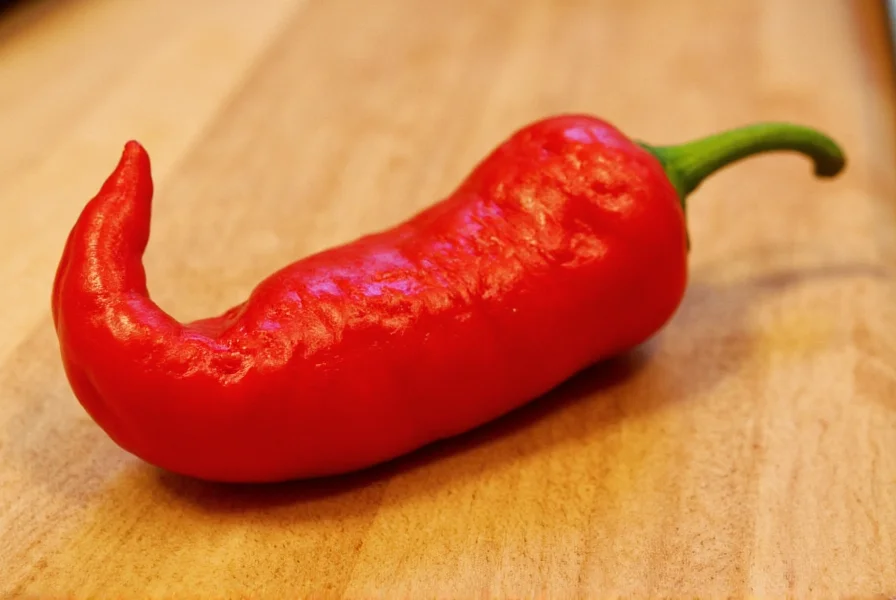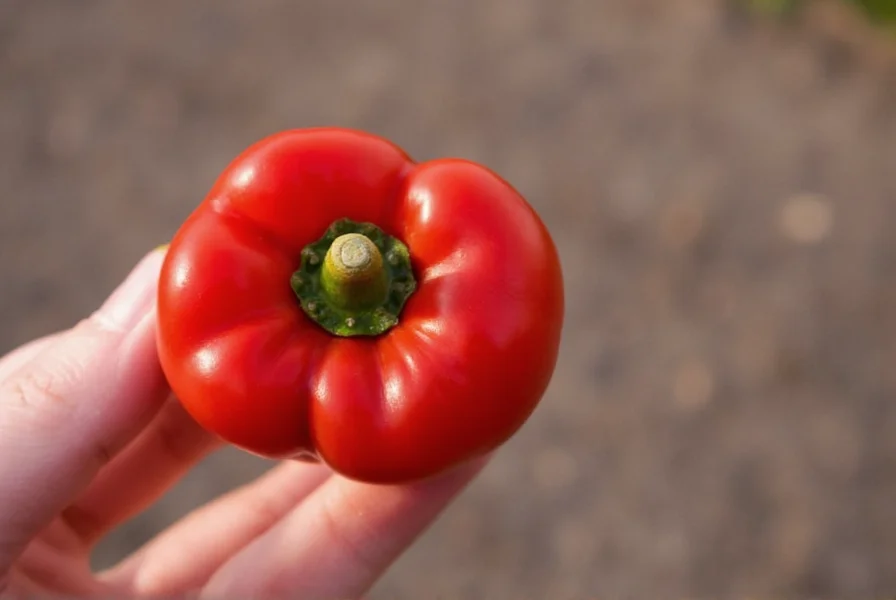Understanding just how hot is a carolina reaper pepper requires context about the Scoville scale, the measurement system for chili pepper heat. Developed by pharmacist Wilbur Scoville in 1912, this scale measures the concentration of capsaicinoids—the compounds responsible for a pepper's burning sensation.
Carolina Reaper Heat Measurement Explained
The Carolina Reaper (Capsicum chinense) holds the Guinness World Record for the world's hottest pepper, with an average Scoville rating of 1,641,183 SHU. Individual peppers can vary significantly, ranging from 1.4 million to over 2.2 million SHU. To put this in perspective:
| Pepper Variety | Scoville Heat Units (SHU) | Heat Comparison |
|---|---|---|
| Bell Pepper | 0 SHU | No heat |
| Jalapeño | 2,500-8,000 SHU | Mild to medium heat |
| Habanero | 100,000-350,000 SHU | Very hot |
| Ghost Pepper (Bhut Jolokia) | 800,000-1,041,427 SHU | Extremely hot |
| Carolina Reaper | 1,400,000-2,200,000 SHU | World's hottest (officially recognized) |
Physical Characteristics and Origin
Bred by South Carolina farmer Ed Currie, the Carolina Reaper is a cross between a Pakistani Naga pepper and a Red Habanero from St. Vincent. The pepper typically measures 1-2 inches in length with a distinctive bumpy texture and a small pointed tail. Despite its extreme heat, it offers a complex flavor profile with initial sweetness followed by intense heat that builds gradually.
What Happens When You Eat a Carolina Reaper?
Consuming a Carolina Reaper triggers an intense physiological response due to its capsaicin concentration. The experience typically follows this progression:
- Initial taste: Fruity, sweet flavor with subtle heat
- 30-45 seconds later: Significant burning sensation begins
- 1-2 minutes: Intense heat spreads through mouth and throat
- 2-5 minutes: Peak heat with potential sweating, flushing, and increased heart rate
- 15-30 minutes: Gradual subsiding of heat, though residual burning may persist for hours
Some individuals experience more severe reactions including nausea, vomiting, or even temporary esophageal spasms. Medical professionals have documented cases of "thunderclap headaches" following consumption of extremely hot peppers like the Carolina Reaper.
Safety Considerations for Handling Carolina Reapers
Proper handling of Carolina Reaper peppers is crucial for safety. The capsaicin concentration is so high that direct skin contact can cause severe irritation. Always follow these precautions:
- Wear nitrile gloves when handling (latex gloves offer insufficient protection)
- Avoid touching your face, especially eyes, during and after handling
- Work in a well-ventilated area to avoid inhaling capsaicin particles
- Wash hands thoroughly with soap and water after handling, even when wearing gloves
- Consider wearing safety goggles for additional protection

Practical Uses Despite Extreme Heat
Despite its fearsome reputation, the Carolina Reaper has several legitimate culinary applications. Chefs and home cooks use it sparingly to add intense heat to:
- Hot sauces and condiments (typically diluted significantly)
- Specialty dishes where extreme heat is the featured element
- Pepper extracts for controlled heat addition
- Processed foods where the heat is carefully measured and distributed
Many hot sauce manufacturers use Carolina Reaper as a base ingredient but dilute it substantially to create products with more approachable heat levels. The pepper's unique flavor profile—described as fruity with notes of cinnamon and chocolate—makes it valuable beyond just its heat.
Carolina Reaper vs. Other Superhot Peppers
When considering how hot is carolina reaper compared to ghost pepper, the difference is substantial. The Carolina Reaper is approximately twice as hot as the ghost pepper, which averages around 1 million SHU. Other superhots like the Trinidad Moruga Scorpion (1.2-2 million SHU) and 7 Pot Douglah (1.8-2.5 million SHU) approach or occasionally exceed the Carolina Reaper's heat, but the Reaper maintains its official world record status due to consistent testing results.
Recent challengers to the Carolina Reaper's title include the Dragon's Breath pepper (claimed 2.48 million SHU) and Pepper X (claimed 3.18 million SHU), but neither has received official Guinness World Records verification. The Carolina Reaper remains the scientifically verified hottest pepper available to consumers.
Responsible Consumption Guidelines
If you're considering trying a Carolina Reaper, follow these safety recommendations:
- Start with an extremely small amount—less than 1/8 of a pepper
- Have dairy products (milk, yogurt) on hand to neutralize capsaicin
- Avoid alcohol or water, which can spread the burning sensation
- Never consume on an empty stomach
- Have someone with you in case of severe reaction
- Consult your physician if you have gastrointestinal conditions
Remember that individual tolerance varies significantly. What might be manageable for one person could cause severe discomfort for another. The question of is carolina reaper dangerous to eat depends largely on consumption quantity and individual physiology.











 浙公网安备
33010002000092号
浙公网安备
33010002000092号 浙B2-20120091-4
浙B2-20120091-4